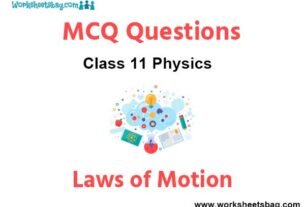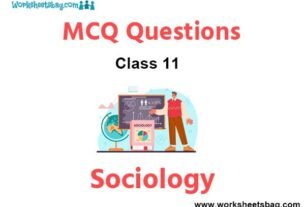Please refer to MCQ Questions Chapter 4 Poverty Class 11 Economics with answers provided below. These multiple-choice questions have been developed based on the latest NCERT book for class 11 Economics issued for the current academic year. We have provided MCQ Questions for Class 11 Economics for all chapters on our website. Students should learn the objective based questions for Chapter 4 Poverty in Class 11 Economics provided below to get more marks in exams.
Chapter 4 Poverty MCQ Questions
Please refer to the following Chapter 4 Poverty MCQ Questions Class 11 Economics with solutions for all important topics in the chapter.
MCQ Questions Answers for Chapter 4 Poverty Class 11 Economics
Question. What proportion of world’s poor, live in India
a) One fourth
b) One third
c) One fifth
d) Half
Answer
C
Question. UWSP and USEP are the 2 components of which yojana?
a) Valmiki Ambedkar Awas Yojana
b) Indira Awas Yojana
c) Antodaya Ann Yojana
d) Swarna Jayanti Shahri Rozgar Yojana
Answer
D
Question. Income of Chaman is 3000 per month, while income of Aman is 4000 per month. In such a case Raman is ______ poor to Aman
a) Relatively
b) Absolutely
c) Officially
d) All of the above
Answer
A
Question. Which of the following have contributed to the unsatisfactory results of poverty alleviation programme?
a) Unequal distribution of assets
b) Improper implementation of the programmes
c) Lack of resources
d) All of the above
Answer
D
Question. Rural poor includes
a) Land owning urban employees
b) Land owning agricultural labourer
c) Landless agricultural labourer
d) None of these
Answer
C
Question. Which of the following are characteristics of poor people?
a) Hunger starvation
b) Limited economic opportunities
c) Poor health
d) All of the above
Answer
D
Question. Under the food for work programme, the wages to the workers can be paid in,
a) In the form of food
b) In the form of cash
c) Neither cash nor food
d) Partly in cash and partly in food
Answer
A
Question. Headcount ratio is calculated by dividing the number of people below the poverty line by
a) Total poor
b) Urban poor
c) Total population
d) Rural poor
Answer
C
Question. In urban areas, poor are largely ____ of the rural poor, who migrate there in search of employment and livelihood.
a) Lack
b) Overflow
c) Underflow
d) None of these
Answer
B
Question. Which of the following are the characteristics of urban poor
a) No or very few assets
b) Kutcha hutments as dwellings
c) Both a and b
d) None of the above
Answer
C
Question. Landless laborer is an example of
a) Urban poor
b) Rural poor
c) Both a and b
d) None of these
Answer
B
Question. The Minimum requirements of a person, include
a) Food
b) Education
c) Car
d) Both a and b
Answer
D
Question. ________ is the approach based on the expectation that benefits of economic growth will reach all sections of society.
a) Trickle down approach
b) Poverty alleviation approach
c) Providing basic amenities
d) None of the above
Answer
A
Question. The poverty across other people, regions or countries is known as
a) Urban poverty
b) Rural poverty
c) Relative poverty
d) Absolute poverty
Answer
C
Question. The planning commission has defined the poverty line on the basis of the recommended nutritional necessity of ______ calories per person per day for urban areas.
a) 3000
b) 2500
c) 3100
d) 2100
Answer
D
Question. Prime Minister’s Rozgar Yojana was started in
a) 1993
b) 1995
c) 1991
d) 1998
Answer
A
Question. The concept of poverty line in India was introduced in
a) 1981
b) 1979
c) 1973
d) 1975
Answer
B
Question. Poverty lines comes out to be three fourth of;
a) Total number of poor people in the country
b) Number of transient poor
c) Adults Jail cost of living
d) Adults of jail cost of living
Answer
C
Question. The minimum calorie intake for people in urban area is
a) 2400 calories
b) 2100 calories
c) 2200 calories
d) None of these
Answer
B
Question. Poverty line is a cut-off point on the line of
a) Distribution
b) Consumption
c) Accumulation
d) All of the above
Answer
A
Question. ____ and ____ are the two measures to determine poverty.
a) Urban and Rural
b) Real and Nominal
c) Relative and Absolute
d) None of these
Answer
C
Question. Relative poverty is also interpreted in terms of ____ within the country.
a) Inequality of income
b) Consumption
c) Both a and b
d) None of these
Answer
A
Question. More than _______ of the world’s poor live in India.
a) half
b) one-third
c) one-fourth
d) one-fifth
Answer
D
Question. MGNREGA focuses on giving employment to
a) Skilled labour
b) Unskilled manual labour
c) Manual labour
d) All of the above
Answer
B
Question. Under Pradhan Mantri Jan Dhan Yojana the account holders were entitled to
a) Rs. 1 lakh accident insurance
b) Rs. 30,000 life insurance cover
c) Rs. 40,000 medical insurance
d) Both a and b
Answer
D
Question. When was the Task Force on Projections of Minimum Needs and Effective Consumption Demand was formed?
a) 1969
b) 1979
c) 1989
d) 1999
Answer
B
Question. In 2011-12, which state had the highest poverty rate in India?
a) Odisha
b) Bihar
c) Madhya Pradesh
d) West Bengal
Answer
A
Question. Poverty line norms for Monetary value of Minimum calories intake was set up by.
a) Nehru Committee
b) Tendulkar committee
c) Both a and b
d) None of these
Answer
B
Read the following statement given below and choose the correct alternative
Question. Statement 1- To define poverty, we divide people into two categories; poor and the non-poor
Statement 2- Poverty line separates poor from non-poor
a) Both are correct
b) Both are incorrect
c) Statement 1 is correct and statement 2 is incorrect
d) Statement 1 is incorrect and statement 2 is correct
Answer
A
Read the following statement given below and choose the correct alternativE
Question. Statement 1- MGNREGA was started by Mahatma Gandhi
Statement 2- Under MGNREGA scheme if anyone doesn’t get work within 15 days of registration, they are entitled for employment allowances.
a) Both are correct
b) Both are incorrect
c) Statement 1 is correct and statement 2 is incorrect
d) Statement 1 is incorrect and statement 2 is correct
Answer
D
Read the following statement given below and choose the correct alternative
Question. Statement 1- Mahatma Gandhi National Rural Employment Guarantee Scheme Act was passed in October 2005.
Statement 2- Mahatma Gandhi National rural employment guarantee scheme act, was launched in 2007
a) Both are correct
b) Both are incorrect
c) Statement 1 is correct and statement 2 is incorrect
d) Statement 1 is incorrect and statement 2 is correct
Answer
B
Read the following statement given below and choose the correct alternative
Question. Assertion (A)- Poverty and illiteracy go hand in hand
Reason ( R)- Due to poor living conditions and lack of resources parents are unable to send their children to school
a) Both assertion and reason are true. Reason is the correct explanation of assertion
b) Both assertion and reason are true. Reason is not the correct explanation of assertion
c) Assertion is true but reason is not
d) Reason is true but assertion is not
Answer
A


